How to: Configure System Restore In Windows 10
There is a strong probability that your system might crash on certain occasions due to malware, infected programs, or device drivers that conflict with the operations of Windows. So, at that exact moment, you might find yourself asking, “Why didn’t I back up my Windows?” This becomes even more problematic when you have important data on your PC or you need to complete a crucial task. To prevent this problem, you don’t have to make a full backup of your Windows, which can require a significant amount of disk space. All you need to do is use an incredible feature within Windows that allows you to revert to a certain point if unexpected problems arise.
This unique feature is known as System Restore. Its primary function is to create a restore point by preserving the current state of your Windows system. Once the System Restore feature in Windows 10 has been configured, you can start utilizing its full benefits. Whenever a new app, device driver, or Windows update is installed on your PC, Windows has the capability to automatically create a restore point, though you also have the option to configure this setting manually. In this guide, I will be instructing you on how to configure the System Restore feature in the most recent version of Windows, which is Windows 10.
Advantages of System Restore Feature:
You can create a restore point to save the current state of your Windows.
It doesn’t require as much disk space as a full backup does.
It is easy to configure.
Restoration process using System Restore Feature is like cutting a cake.
Configure System Restore Feature in Windows 10:
In order to create a System Restore Point using System Restore Feature of Windows 10, you have to enable it inside settings. Follow along this guide to get it done.
Enabling System Restore:
To enable system restore in Windows 10, follow the steps below.
Search for System Restore using Cortana in your Windows 10. From there, click on Create a restore point.

A System Properties window will appear, containing the settings for the restore point. Inside this window, navigate to the Protection Settings and ensure that protection is enabled on your Local Disk C (System Drive).
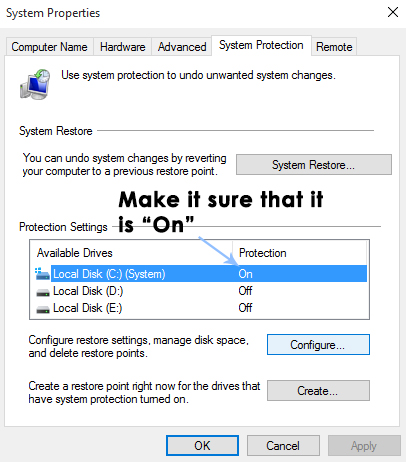
If it is disabled, select that disk and click on Configure button to enable the protection. You should also allocate the maximum disk space for system protection. You can set it to whatever value you want. Click on Apply and OK afterwards to apply the settings.
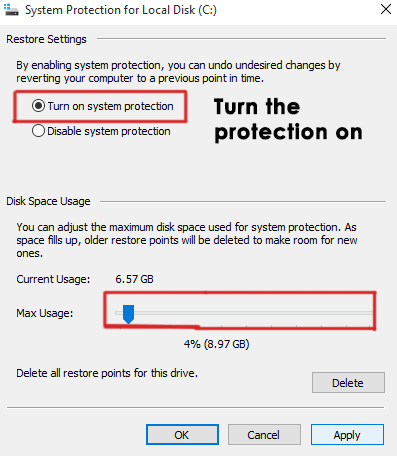
Now, the system will create a restore point automatically whenever an alteration happens inside your Windows.
Creating a System Restore Point.
If you want to create a manual restore point (which is preferred), then follow along further.
To create it manually, you need to click on the ‘Create’ button while selecting Local Disk C inside System Protection.
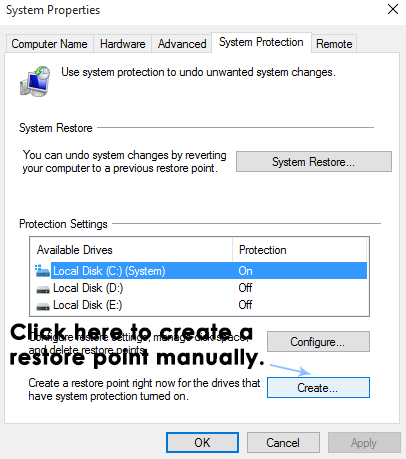
The next prompt window will ask you to type the description of your restore point. I prefer to type date of the restore point. It is important to manage the restore points accordingly. Click on Create button to start the process. It is a short process and might not take more than 1 minute.
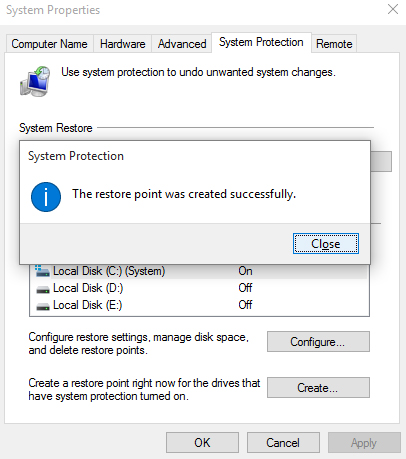
Restoring the system using system restore point,
If, at some point, you come across certain issues with your Windows, you can restore your system to the restore point saved on your PC. In order to restore your system, follow the steps below.
Search for System Restore using Cortana and click on Create a restore point.
Inside the System Properties window, click on System Restore.
Inside the System Restore window, select the option labeled Choose a different restore point and hit the Next button
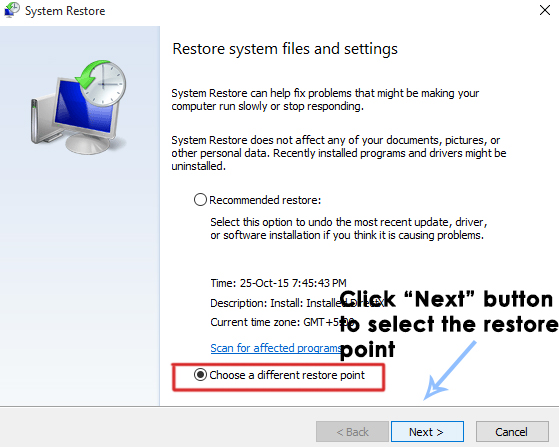
Select a particular restore point that you saved manually beforehand. You can also select any restore point from the list and hit the ‘Next’ button to initiate the restoration process. After the process is successfully completed, you will revert to the state you had previously saved.
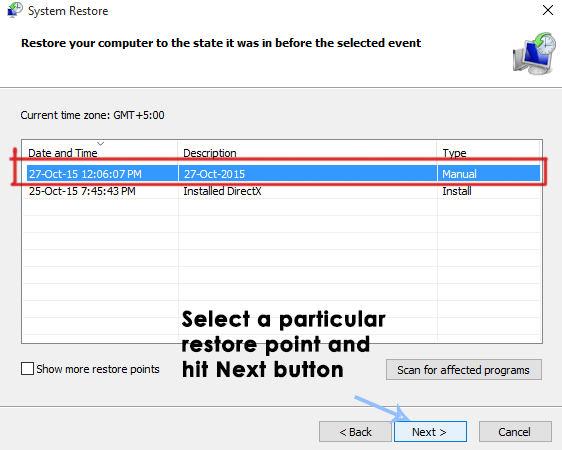
Restoring the System if you can’t Boot to Windows:
If you are unable to boot into Windows 10, then you can follow these steps.
Open the Advanced Options by following this guide on How to start Windows 10 in Safe Mode.
Inside the Advanced Options, click on System Restore and follow the same procedure by selecting the Restore Point you created earlier. Your Windows will revert back to the state that you saved previously.